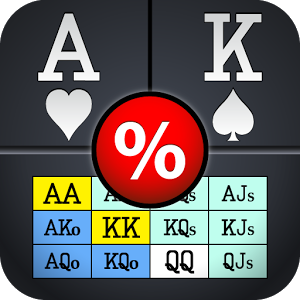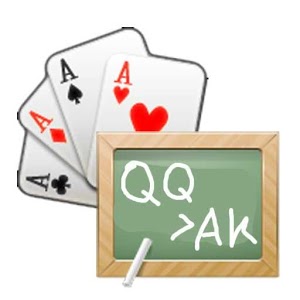Float equity
Editor’s note: The following is a special preview from Jeff Hwang’s upcoming book, Pot-Limit Omaha Poker: Advanced Play Vol. I, tentatively scheduled to be published by Dimat Enterprises in the first half of 2009.
In the last issue, we took a look at draw equity, which we defined as our share of the pot derived from tangible hand value – such as a flush or straight draw, or even a draw to two pair or trips in some cases. As noted, draw equity is derived from a combination of direct and implied equity.
In contrast, float equity is our intangible value derived from a combination of fold equity and the value of the information our opponents give us when they check with the intention of giving up to a bet. It’s not important (or feasible) to be able to actually calculate float equity at the table, but it is important to be able to conceptualize it. That said, there are two basic things you need to know about float equity:
1. Float equity has real – sometimes considerable – value that can potentially make it profitable to call with otherwise thin hand values.
2. The value of float equity is highly dependent on our opponents.
Point No. 1: Float equity has real value
Going back to the example from our discussion of draw equity in the last issue, we are heads up with position after the flop, there’s $100 in the pot, and we have a $2,000 stack. We hold the A K
K




























































The result is that our opponent will check and fold on 15 of the 45 possible cards – or 33 percent of the cards that hit the turn. Now, in this case, we don’t have any implied equity because our opponent shuts down when we make the flush, but we do effectively have the 33 percent pot equity that we need to justify calling a pot-sized bet due to the six float outs.
And if we increase our thinking opponent’s 100 percent check-and-fold range to include any straight card that completes the 13-card nut wrap (J-10-9-X on an 8-7-2 board), he will also check and fold if a 10 or 9 hits the turn, yielding six more float outs, for a total of 12. Now he will check and fold on 21 of 45 unknown cards, or nearly 47 percent of the time. Now, all of a sudden, we have $140 of expected value on our $100 call, for a net gain of $40, and float equity has made it quite profitable to call with the bare nut-flush draw against our lone opponent.
Point No. 2: Float equity is highly player-dependent
The value of float equity is highly player-dependent, and sometimes wildly so. This is because the float is dependent on the information gained when our opponent checks the turn. The problem is that two players holding the same hand may react differently to the same scare cards.
Let’s say we are still heads up with position after the flop, there’s $100 in the pot and we have a $2,000 stack. Again, we hold the A



















































































































Now let’s make our opponent about the weakest player in the world, and say that he will check and fold on any turn card except the A















While that might seem like a fairly extreme case, it is actually not as far from reality as it might seem, as a lot of players – and not just extremely weak players – who hold the A











































I mean, if you are holding the A









































































Against the Weakest Opponent With the A











































However, some players don’t bet only when they are strong; they also continue to bet when they are weak.
Let’s say that our opponent is at the other end of the spectrum. If he is a maniac who always bets the pot on the turn, we will have gained implied value on our draw, but we lose float equity because we won’t know when he is weak strictly from the betting. A straight card like the 10





















In this matchup, we will again have 22 percent direct equity on our $100 flop call, but also will have an additional 22 percent in implied equity. This is easy enough to figure, because we will make the flush and get back $300 from the pot 22 percent of the time, for an expected value of $65.85, and we will get an additional $300 from our opponent at the same time, for an additional gain in expected value of the same $65.85, which equates to 22 percent in implied equity.
The result is draw equity of 44 percent and expected value of $131.70 ($31.70 net of our $100 investment on the flop). But in this case, we also have zero float equity, because our opponent never checks when weak. As such, draw equity comprises total equity against this opponent.
The bottom line is that the weaker our opponents, the more valuable the float becomes, and the higher our float equity. In contrast, the stronger or simply more aggressive our opponents are, the less valuable the float becomes in and of itself, and the more dependent our call will be on actual hand values.
This article was originally written by Jeff Hwang. Jeff Hwang is a semiprofessional player and author of Pot-Limit Omaha Poker: The Big Play Strategy. His latest book is Advanced Pot Limit Omaha Vol.1 and will be releasing Vol 2.
Submit your review | |







